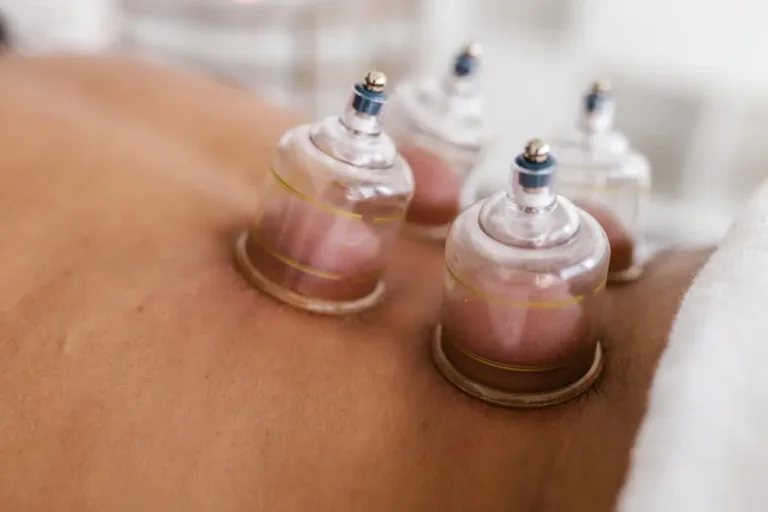7 Benefits of Cupping Therapy for Athletes
In the world of athletics, where every edge counts, athletes are always on the lookout for ways to enhance performance and aid recovery. Cupping therapy, an ancient alternative medicine practice, has gained popularity as a powerful tool in an athlete’s recovery arsenal. Let’s explore some of the amazing benefits this therapy offers.
1. Boosts Blood Circulation
Cupping therapy helps increase blood flow to targeted areas, ensuring muscles receive ample nutrients and oxygen. This enhanced circulation aids in faster muscle recovery and prevents fatigue, keeping athletes ready for their next challenge. The process of cupping creates a vacuum effect on the skin, drawing blood to the surface and effectively revitalizing the area. This boost in circulation is crucial, especially after intense physical exertion, as it assists in flushing out metabolic waste that can cause muscular stiffness. Additionally, the consistent practice of cupping can contribute to overall cardiovascular health, making it a valuable addition to any athlete’s regimen.
Moreover, enhanced blood circulation through cupping isn’t just beneficial for recovery. It can also be instrumental in improving overall athletic performance by ensuring muscles are prepped and ready for exertion. Think of it as providing your body with the ultimate tune-up, ensuring that each component functions at its best under pressure. Athletes who use cupping therapy regularly may find that they have increased stamina during workouts, as well as improvement in their endurance over time.
2. Reduces Muscle Tension
Athletes are often plagued by tight, tense muscles. Cupping therapy works to relax these muscle groups by lifting and stretching the tissues, leading to greater mobility and reduced discomfort. The process involves creating a suction effect with cups on the skin, which gently elevates the skin and underlying tissues, facilitating the release of tension. This release can be incredibly beneficial for athletes who experience chronic muscle tightness due to repetitive strain and high-intensity training.
Furthermore, regular cupping sessions can help in preventing the development of more severe muscular issues over time. By maintaining a consistent practice schedule, athletes can enjoy long-term muscular health and improved functional movement. Regular cupping therapy sessions can also complement other therapeutic practices like massage or acupuncture, amplifying their effectiveness.
3. Alleviates Pain and Soreness
The suction created during cupping sessions can effectively ease pain by stimulating the nervous system and inhibiting pain pathways. This natural pain relief can help athletes perform at their peak without being hindered by soreness. The therapeutic approach targets deep tissues, providing relief from acute and chronic pain conditions common among athletes, such as backaches, muscle cramping, and joint disorders.
Cupping therapy promotes the body’s healing processes, making it a preferred option for those seeking an alternative to traditional pain management solutions. The treatment has been found to be particularly effective in managing conditions that haven’t responded well to other forms of therapy, offering new hope to those in need of effective pain relief. For athletes wary of over-reliance on painkillers, cupping provides a safe, non-invasive alternative.
4. Enhances Flexibility
Flexibility is crucial for athletes to prevent injuries and improve performance. Cupping therapy assists in loosening the fascial layers, thereby enhancing overall flexibility and allowing athletes to move more freely and efficiently. The practice helps to break down adhesions between the skin and fascial layers, reinstating a full range of motion and elasticity.
Beyond injury prevention, improved flexibility can enhance an athlete’s agility in their respective sports. Whether it’s a runner who needs to maintain a wide stride or a gymnast who relies on precise, flexible movements, the expanded range of motion provided by cupping can give them the competitive edge they crave.
5. Speeds up Recovery
Post-training or competition, rapid recovery is key for athletes. Cupping therapy can accelerate healing by reducing inflammation, removing toxins, and improving lymphatic flow, enabling athletes to get back to their routines swiftly. This process not only mitigates downtime but also ensures that the athletes’ bodies are continually nourished and primed for the next bout of training or competition.
Incorporating cupping into post-event recovery routines can dramatically enhance an athlete’s overall fitness levels. Faster recovery times mean more frequent training sessions and quicker progress toward personal performance goals. Many professional sports teams have recognized the benefits and implemented cupping therapy as a staple recovery tool for their athletes.
6. Improves Skin and Tissue Health
Beyond muscles, cupping therapy also benefits skin and connective tissues. By stimulating blood flow, it nourishes these areas, enhancing their health and resilience, which is particularly beneficial for endurance athletes exposed to various environmental conditions. This increased blood flow not only promotes healing but also nourishes the skin from within, helping athletes maintain healthy and resilient tissue.
The suction created by the cupping process can also facilitate the reduction of the appearance of scars and stretch marks, proving beneficial for athletes conscious about their skin health. Moreover, the therapy’s detoxifying effect can help clear skin impurities, contributing to healthier skin tone and texture. Athletes who spend a lot of time outdoors, such as cyclists or marathon runners, may particularly appreciate these benefits as their skin endures harsher environmental factors regularly.
7. Supports Mental Well-Being
Athletes must often contend with mental stress alongside physical challenges. Cupping therapy promotes relaxation, reduces stress levels, and encourages a sense of overall well-being, helping athletes maintain their mental focus and clarity. The calming effects of cupping are similar to other holistic practices, providing a reprieve from the high-pressure environments in which athletes often find themselves.
Furthermore, the mental clarity achieved from regular cupping can improve strategic thinking and decision-making in competitive scenarios. Athletes may feel more centered and less anxious, enhancing their ability to concentrate on tasks and goals. The mental resilience developed through such practices can greatly enhance both personal satisfaction and professional achievement in the sporting realm.







